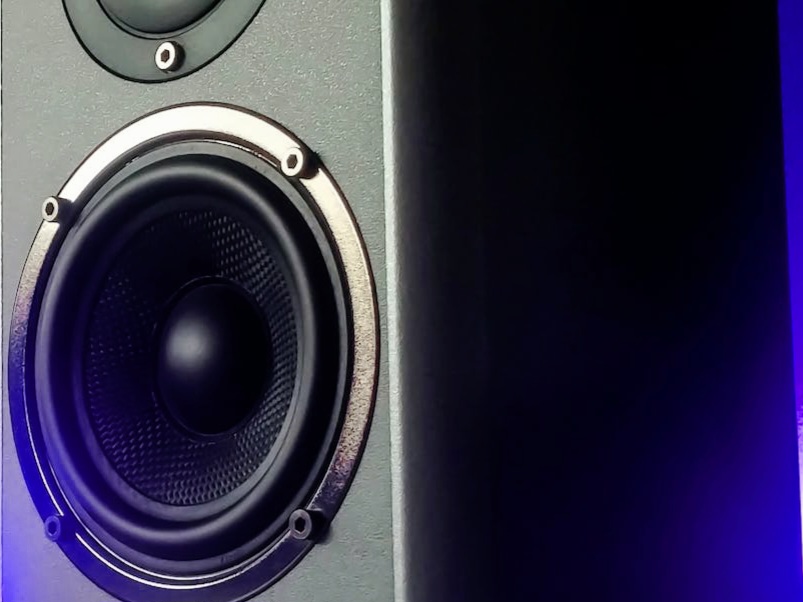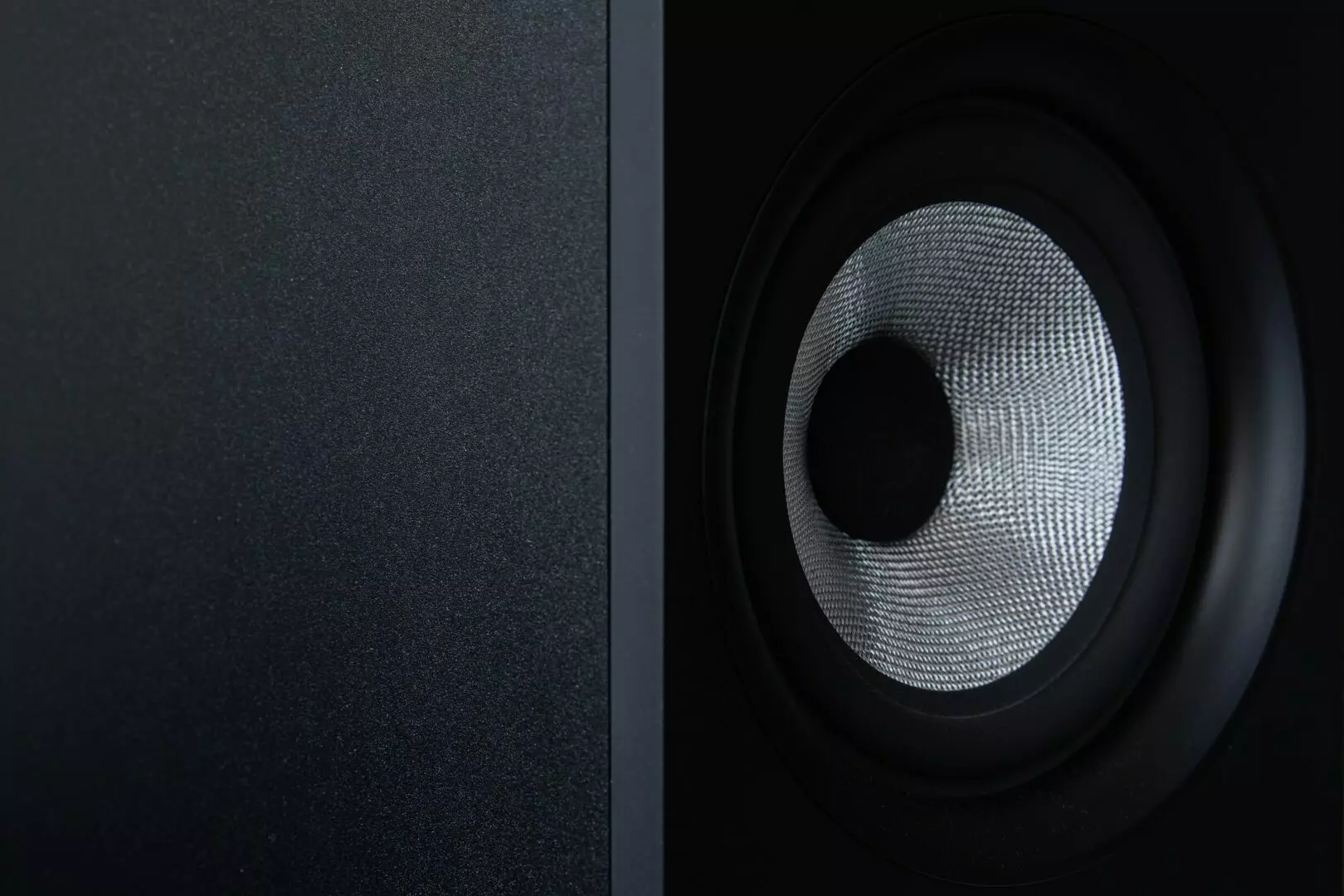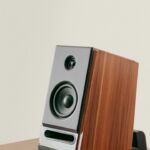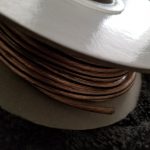Rear Ported Speaker Placement (Guide)
Rear Ported Speaker Placement (Guide)

Whether you’ve just got a new pair of speakers, or you’re trying to optimize what you already have, it’s likely you’ve noticed a port of some kind on either the front or the back of your speaker.
But you’re probably wondering what the point of this port is, and more importantly, where should you actually place your speakers for the most optimal sound quality?
Let’s find out!
Rear Ported Speaker Placement
In terms of rear ported speaker placement, I’ve found that a maximum of 4 feet is the point where a speaker can still benefit from room gain but anywhere from 1.5 to 3.5 feet from the wall often gives a good quality of audio. This could be different for you though since every room & speaker is different.
What Are Rear Ported Speakers?
Rear ported speakers, often called bass reflex systems, are a common design among smaller bookshelf speakers.
Due to their smaller cabinet size, the port is placed on the back to save space while still being functional.
Bigger speakers, due to actually having more space to put the port, can place it on the front or back of the enclosure — though whether it makes a difference and which option is better is a different story entirely (we’ll get to that in a bit though)
But you might be asking, what is the function of a rear port in the first place?
Well it allows for a few things.
The main function of a rear port is to minimize the distortion produced by the speaker when the driver moves.
In order to produce sound, the speaker driver (often called a woofer) has to move air from one point to another.
The problem though, when this air has nowhere to go, is it remains in the cabinet which can then directly impact the sound you experience.
Sealed speaker designs can mitigate this potential through specialized internal bracing to help with their sound quality.
When adding a port to the cabinet though, it allows for this air to escape, positively impacting sound quality without having to accommodate for the lack of a port like a sealed variant would.
This port can allow for the speaker to reach lower frequency levels without distorting in the process.
Of course the shape of the port, (whether it’s vented or circular) its size, where it’s located, and even the material it’s made of can influence things positively or negatively.
Size is probably one of the most important factors since that’s directly correlated with how much air can actually leave and at what speed (also known as tuning which varies depending on the manufacturer and style of speaker)
That’s simplifying things of course since there’s so many variables when it comes to sound, but that’s really the basic premise behind the function of a port on speakers.
What’s The Optimal Speaker Rear Port Distance From The Wall?

So with that said, let’s just get right to the answer to the original question, what’s the optimal speaker rear port distance from the wall?
From my experience, the optimal distance often tends be anywhere from around 1.5 to 3.5 feet.
Now some might say well placing the speaker too close to a wall might introduce some reflections and could directly influence the way the speaker sounds — and that’s definitely true.
However there’s a bunch of other variables that might affect sound like the material of the speaker itself, the material of the wall, what’s actually in the room itself, room size, and so on.
From my experience and what I’ve found from testing many speakers over the years is the maximum distance I would say is 4 feet but the ideal I’ve found often ranges from 1.5 to 3.5 feet from the wall.
The reason has to do with room boundaries and how the sound interacts in the room.
When placed too close obviously that’ll negatively impact sound quality but when too far from the wall, then it can’t benefit from any of the potential reinforcement speakers often receive when placed near a surface.
I’ve found that speakers can gain a lot of depth and oomph just from placing it closer to a wall and can make it feel more authoritative in volume.
It’s an easy way to get a sound boost but placing it too close can make it sound boomy which is why it’s important to get that distance just right.
Remember all of this isn’t always the case since every room and speaker is different, and the optimal distance could be different in your case.
Though with that said, I wouldn’t necessarily say there’s a maximum difference if you’re going for accuracy; it’s just that I’ve found for rear ported speakers, a maximum distance 4 feet for room gain is the point before it becomes less noticeable.
Your ideal spot could be shorter or longer than that, but I feel like those are a pretty good starting points in my opinion.
In fact, I created a speaker distance calculator that takes into that into account that might be helpful too.
How Do I Get The Most Out Of My Rear Ported Speakers?
So how do you actually get the most out of your rear ported speakers?
Well of course getting the distance from the wall just right is important, there’s other things you can do too.
Another thing that’s important is getting the front stage (left, right, & center channel) speaker’s distance from each other right too.
If you place them too far apart then the soundstage falls apart with the audio since it’ll sound disjointed and not really immersive.
While placing them too close can make things sound narrow diminishing the surround sound effect.
The ideal distance is placing them the same distance apart that you are seated from them.
So for example if you’re seated 6 feet away, you’ll want to place them 6 feet apart.
This is known as the golden triangle rule in sound because the distance between you and your speakers is equal on all 3 sides forming an equilateral triangle.
Though this may not always be possible due to seating or walls, ideally try to get them as even as possible in spacing.
Another way you could optimize your sound is through acoustic panels, bass traps, and even additional plush material in the room so there isn’t as much echo.
You could also use time alignment, which basically helps with timing discrepancies by using a delay to adjust for this.
Yet another thing you could do that could help you get the most out of your speakers is using toe in.
Toe in and toe out are basically terms for the angle at which the drivers of your speaker is pointing towards.
By increasing or decreasing that angle of your speakers based on where you’re sitting by pointing them more inwards or outwards, you can further tailor the sound for your current seating.
There’s also soundproofing and things of that nature, but these are direct things you can implement that may help.
Are Rear Port Speakers Worth It?
Are rear ported speakers worth it though?
Are they better than say front ported speakers?
Honestly, in my opinion I don’t know that they make too much of a difference.
The point of the port is to expel air, and whether it’s placed on the front or the back isn’t nearly as important as the things that directly matter like driver & cabinet size, speaker material, bracing, the size & shape of the port itself, those sorts of things.
So in essence, whether a rear ported speaker is worth it is going to depend more on the things mentioned not really the location of the port.
Though I will caveat all of that by saying the port being located on the back of the speaker, means it’s technically closer to the wall so it could make sound fuller overall from resonance and boundaries but it depends.
Final Thoughts
Hopefully this helped with figuring the right placement of your rear ported speakers and you now have an idea of all the things that can directly influence the audio you experience.
There’s a bunch of things that can alter your sound, and their distance from the wall is certainly one of them.
Until next time, make it easy, keep it simple!
About Me

Jay
Hey everyone it’s nice to meet you. I'm Jay, writer & founder of the site Easy Home Theater. I've been with this hobby of home entertainment for many years now. I decided to create this site to be a helpful resource, and share everything that I've learned from personal experience with you. I also happen to be a huge gamer, lover of all things tech related, and a major fitness buff (love weightlifting)
Contact: Contact Jay
Facebook: https://www.facebook.com/Easyhometheater/
X: https://x.com/easyhometheater
Pinterest: https://www.pinterest.com/easyhometheater/pins/
Instagram: https://www.instagram.com/easyhometheater/
Followit: https://follow.it/easy-home-theater
Bluesky: https://bsky.app/profile/easyhometheater.bsky.social







Leave a Reply